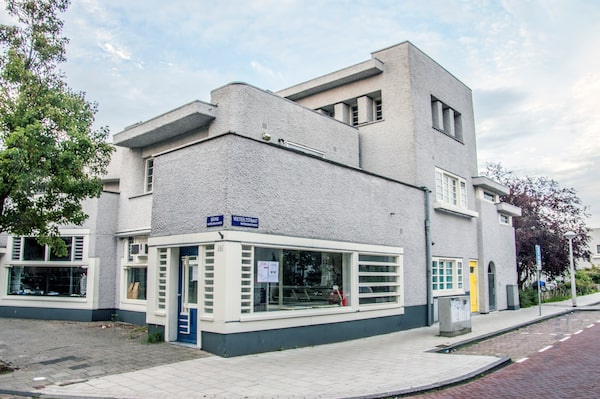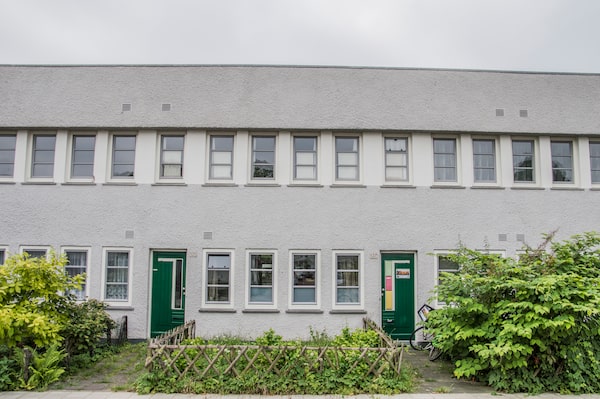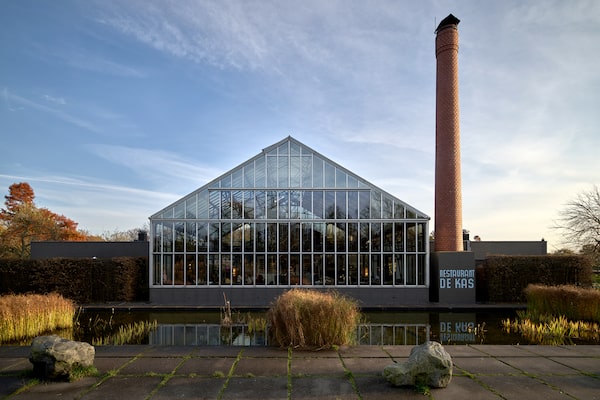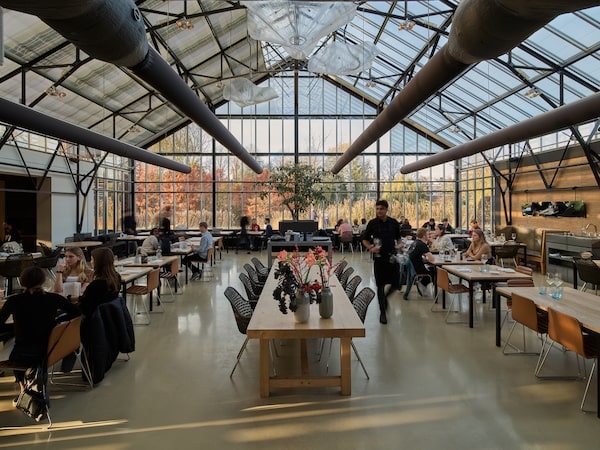
The Butcher Korrel.Robert vt Hoenderdaal/iStockPhoto / Getty Images
It’s not often you find yourself on an epic walk through Amsterdam. In the misty 17th-century streets of the canal belt, connecting the dots will take barely 20 minutes. And that’s when you’re not cycling – on two wheels, the streetscape whizzes by. Even if you’re not an architecture buff, as I am, it seems a shame to rush through a city this deserving of being savoured.
I got lucky on a recent visit when an unexpected meeting came up in remote Watergraafsmeer, beyond the houseboat villages on the Amstel River in Amsterdam East, or oost. I had ample time to hoof it, and I’m glad I did. Outside the confines of the Golden Age centre, leaving behind the tourists toggling between Anne Frank and Rembrandt, I wandered into a quiet, colourful, hyper-local version of Amsterdam I never knew existed.
Because, of course, Amsterdam is more than Golden Age wonders and world war horrors. The east especially acts as a habitable timeline of modern Amsterdam – its rise, fall and indisputable rise, uniting progressive design with lowland gardens and great food.
What stopped me initially were the signs around pastoral Park Frankendael (more on that later) welcoming me to Jeruzalem. Over the years I’ve learned that many streets in Amsterdam namecheck the colonies – Javastraat, Afrikanerplein, Surinamekade – and many immigrants from the former colonies actually ended up living there. Jerusalem was no Dutch colony, though. So I made a detour into the Watergraafsmeer neighbourhood and leapt centuries back into the 1950s.
Around me, rows of flat-topped white houses arranged themselves in long L shapes around pretty parkettes and playgrounds. Some seemed to have been refaced in sparkling white brick or bleached cedar siding; they all had wide windows and little balconies looking north and south. I flagged down a woman pushing a stroller toward the junior school. Where was I in the timeline of Amsterdam’s architectural evolution?

The Veeteeltstraat.Robert vt Hoenderdaal/iStockPhoto / Getty Images
Evidently Jeruzalem’s neighbourhood design is a nod to the flat-roofed white houses built between the world wars in Jerusalem.. Their functionality and sense of community inspired Amsterdam architects during the postwar development boom. One woman in particular, the pioneering female architect Jakoba Mulder, adapted them to the outer city and led Jeruzalem’s design. In 2010, long after her death, it became the first postwar neighbourhood to earn national monument status.
I was on the cusp of something. After my meeting, I resumed exploring and meandered southward through the Nieuwe Ooster cemetery – less a glum graveyard than an ecosystem of old oak, chestnut and hawthorn, where butterflies swarmed bushes. I watched a heron feather her nest as squirrels scampered around the white military headstones and ran across a small, delightful section for pets. Further along, flowers and golden star decals adorned graves for the area’s Jews, sent to their deaths during the war. And around the bend was an angular columbarium coated in shiny zinc with niches notched out where I could sit and gaze at the birch forest.
Family dispatch: An all ages tour of San Miguel de Allende and Guanajuato City, Mexico
Summer road-trip worthy restaurants from coast to coast
True to its name, Watergraafsmeer was literally reclaimed from the water, drained by the canal system dug out in the 1600s. The lush, green polder that flourished here, below the level of the IJ river nearby, served for a while as a playground for nobility and bankers. When the damp got to them, they left. The last remaining country estate, a mansard-roof mansion called Frankendael House, is the centrepiece of the neighbourhood now.

Restaurant De Kas.Rinze Vegelien/Handout
Watergraafsmeer really got interesting in the 20th century, though, after engineers had gotten better at keeping the water out. Even before Jeruzalem, there were big plans afoot. A hundred years ago the city’s socialist government, determined to rehouse the poor, infirm and ghettoed, began contemplating concrete as the quick and cheap answer. They hired a team of innovative architects to experiment with concrete building methods. The result was Betondorp: a secluded community in a mishmash of art deco, Bauhaus and cubist style.
Betondorp took some getting to, past the far end of the cemetery, over a canal and through a maze of brick streets clearly planned to deter traffic. But when I finally arrived in the central square, the steel-grey buildings appeared like artworks, adorned with wide banks of windows, ziggurat tiles and flashy coloured doors reminiscent of Mondrian. And with only me to admire their distinctly European, jolie laide allure. Where were all the tourists?
Amsterdam Oost is probably no secret by now. With the canal belt increasingly congested and fashionable Amsterdam moving outside it, the area roughly defined by the Amstel River to the west and Singelgracht, the outer belt, to the north, has transformed. Restaurants like Canvas, by the river, and Bar Botanique, in the fast-gentrifying multicultural enclave Indische Buurt, are staples of design magazines. Hotel Arena has a popular cafe that spills into the Oosterpark, a sprawling green sculpture park with playgrounds and ponds. The rooftop lounge at Volkshotel offers a rare panorama over the city.

Restaurant De Kas grows all its own produce on site.Rinze Vegelien
But visitors tend to stop short of Watergraafsmeer, and it’s a shame. When I returned to explore another day, I ducked behind Frankendael House to find seven acres of parkland overgrown with wildflowers and tall grasses. At its centre, in a massive 100-year-old greenhouse, is one of Amsterdam’s best restaurants – De Kas, which grows all its own produce on site. The mansion itself had a cafe with tables out in the gravel courtyard. Deep into the Frankendael lawns, families had gathered for their own déjeuner sur l’herbe.
I did get on a bike eventually. I pedalled five minutes along pretty Galileiplantsoen to Science Park, the vast campus surrounding the University of Amsterdam. Science Park is built up with showy postmodern architecture in every conceivable material. And yet as soon as I looped back out, I found myself on narrow, brick roads lined with steep townhouses – those quintessentially Dutch backdrops visitors love. Rolling toward Jeruzalem again, I stopped at the microbrewery Poesiat & Kater for pale ale and bitterballen, the ubiquitous Dutch croquette, then continued along the Ringvaart canal past every type of gable, turret and balcony. And when I reached the Amstel, the neighbourhood’s western frontier, kids were jumping into the water to cool off while their parents sunned themselves on the bank. Between the open spaces and remarkable quiet, I relaxed into vacation mode. Eventually I made it back to the centre, among the hordes. This time, I was keeping a beautiful secret.
Keep up to date with the weekly Sightseer newsletter. Sign up today.